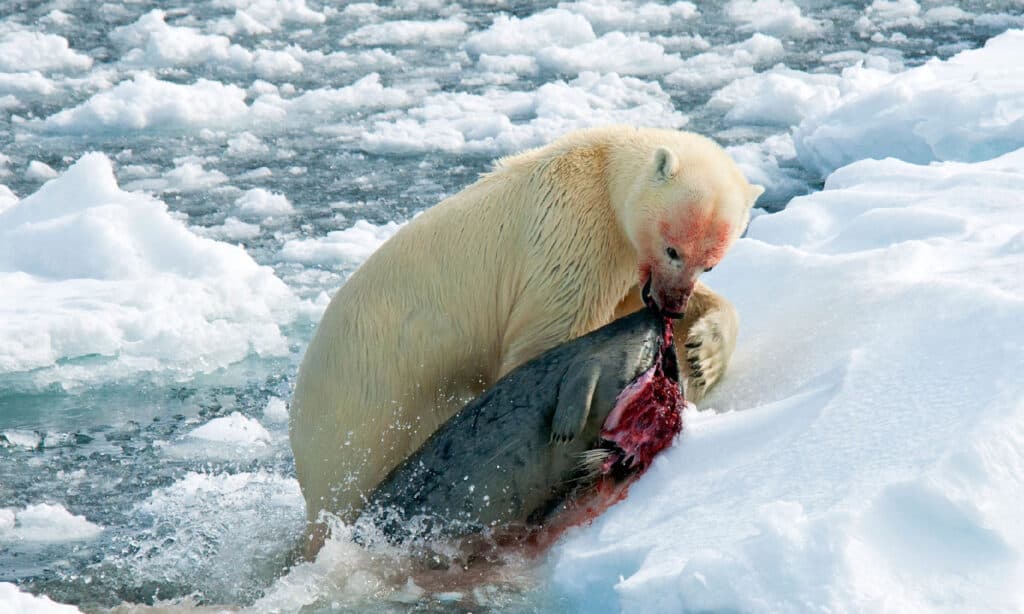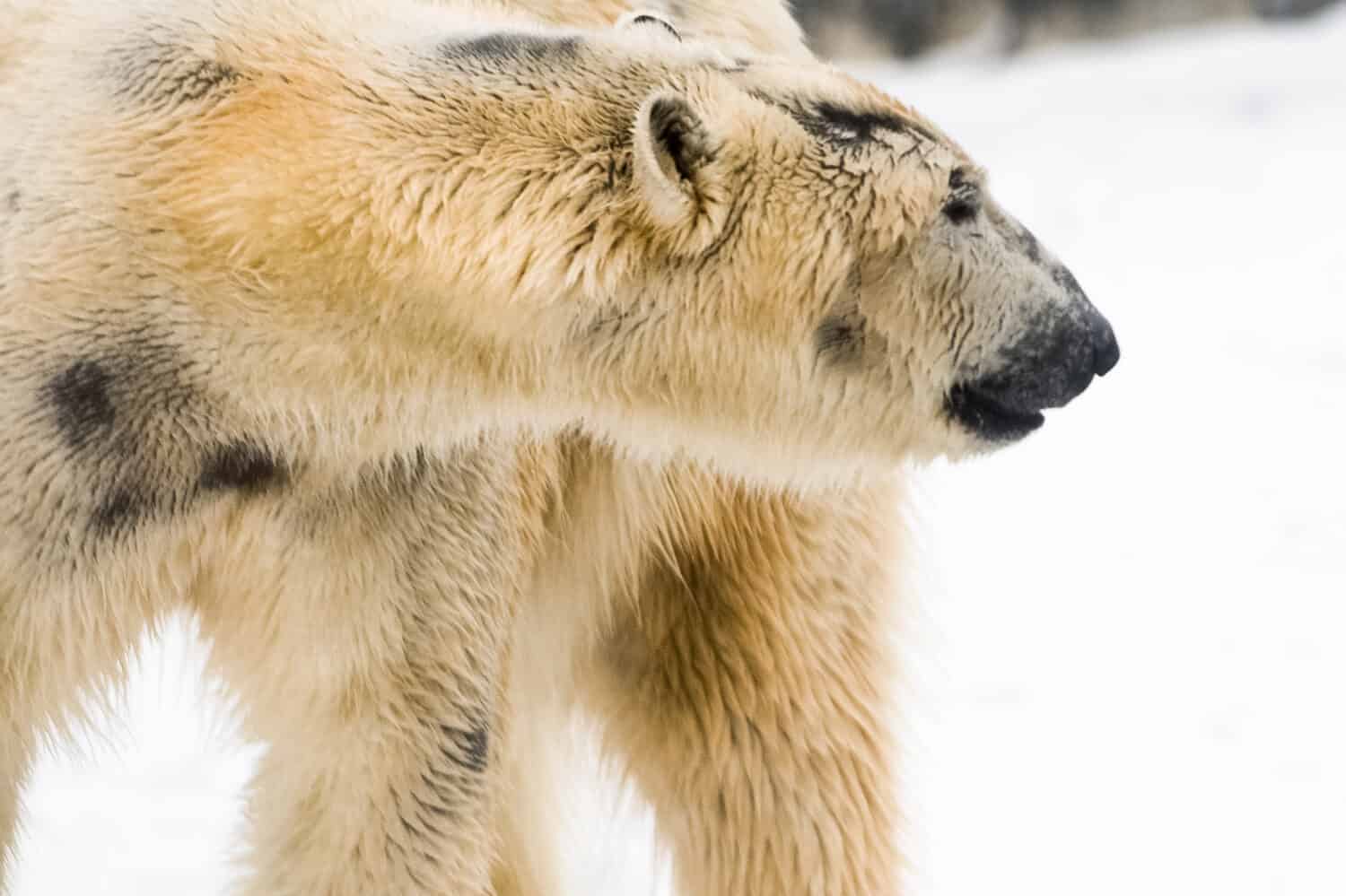Polar bears have great endurance, swimming without rest for multiple days at a time. Their paws serve as rudders, helping them get from ice platform to ice platform. Although it’s easy to pick them out in a lineup of other bears, what color are polar bears, actually? Let’s find out!
What Are Polar Bears?
Polar bears are marine mammals unlike all the other bears living throughout the world. They live in the Arctic, they can swim long distances, their paws are very big, and they know how to productively use them! Polar bears can reach up to six miles per hour in the water and their favorite foods are bearded seals and ringed seals.
These bears are not very successful at hunting them, unfortunately, however. Polar bears spend half of their lives trying to catch food, but they do not get much (only about 2%). But to make up for missing out on their favorite meals, they also eat birds, and eggs and scavenge small mammals, carcasses, and vegetation they find.

Polar bears have a preferred source of sustenance: seals.
©iStock.com/AGAMI stock
Where Do Polar Bears Live?
You can find polar bears in Arctic regions. They are native to Russia, Greenland, Norway, Canada, and the United States. They move from season to season as they follow their prey, though they are dependent on icy waters for hunting. It is said that climate change is doing a number on them.
Their need for survival is highly affected as the ice habitats are continuously changing and there is less food for them to hunt and sustain themselves. They are currently at their highest risk as well as many other species due to climate change.
What Color Are Polar Bears, Actually?
When they are just cubs, polar bears have brown fur but as they grow and mature, they develop the white fur they’re easily recognized by. Their fur is translucent, which means it only appears to be white because it’s actively reflecting any visible light. Polar bears’ skin is actually jet black!
This jet-black color works as built-in insulation and helps them retain heat and keeps them warm in the horrid temperatures of the Arctic. They were made for these temperatures. They can also camouflage extremely well when they go after their food.
Why Do Polar Bears Have White Fur?
Their apparent white fur is translucent and has no white pigment. Nevertheless, this white that emanates from polar bears helps them camouflage into their environment to better hunt as they go mostly unnoticed. When they are little, their fur does not appear white, rather brownish. The color of their skin is black, and it is helpful to endure the difficult weather that surrounds them.

Despite its appearance, a polar bear’s skin is actually black.
©Michael Cola/Shutterstock.com
Their fur can have different shades, sometimes it looks grayish and sometimes it’s kind of a light brown tint on their perceived white fur. When the angle of the lighting permits it, instead of white you can see them more of a greenish color from the accumulated algae. During the summer months, they spend some time on land. They will play with dirt on land, and that is when they become yellowish or off-white.
Polar Bear Conservation
It’s not just climate change that is endangering polar bears. The oil and gas industry has presented some threats of its own. Polar bears rely on their habitat in the Arctic to survive. With the oil and gas industry comes oil exploration which also introduces oil spills. If a polar bear comes into contact with oil, the natural insulating effect of its jet-black skin no longer works at full capacity.
This means that on top of swimming nonstop for days and spending half of their lives hunting to no avail, they now have to expend even more energy just to stay warm. If they happen to ingest any of the oil that makes contact with their skin, they can suffer from poisoning as well. There is a lot that presents a danger to polar bears and their ability to survive.
Even the prey they are able to catch may have already been poisoned by oil spills and all those toxic chemicals, which, in turn, poisons the bear. With all of this going on, a polar bear’s reproductive system is also affected, which inhibits its ability to reproduce. It’s an all-around attack for polar bears but people like those who make up part of the WWF Arctic Programme are coming together to protect this vulnerable species.
The photo featured at the top of this post is © Anne Kiel/Shutterstock.com
Thank you for reading! Have some feedback for us? Contact the AZ Animals editorial team.







